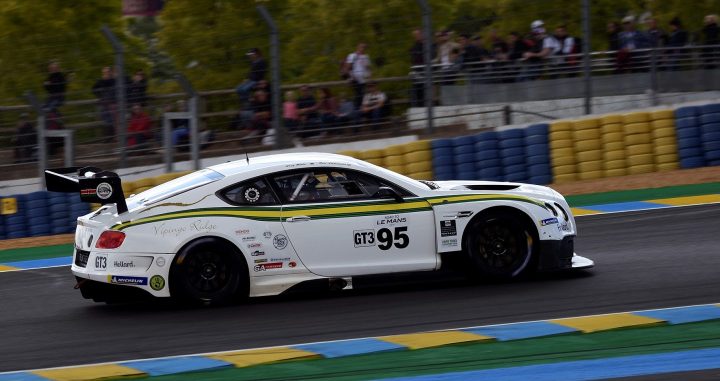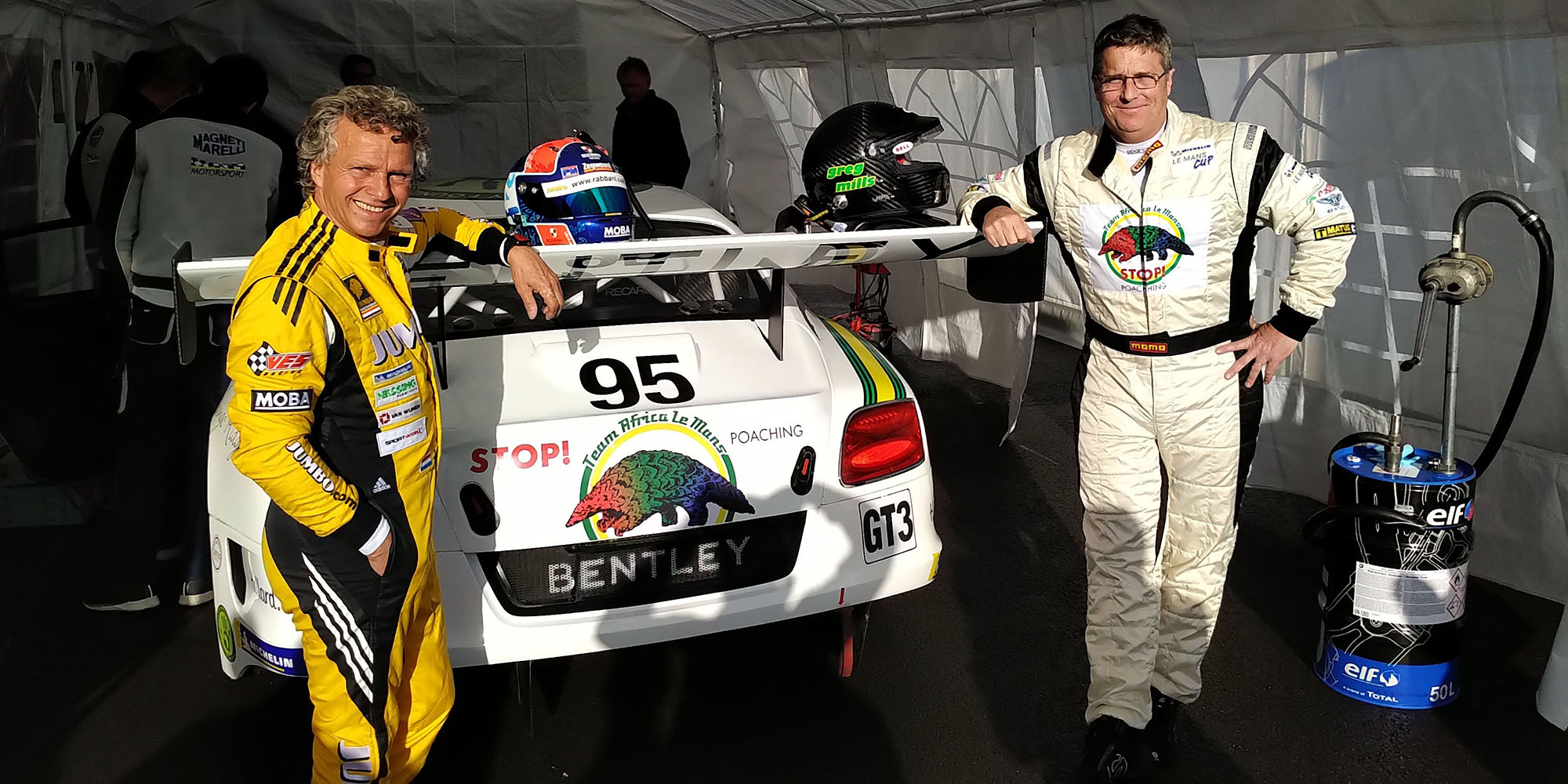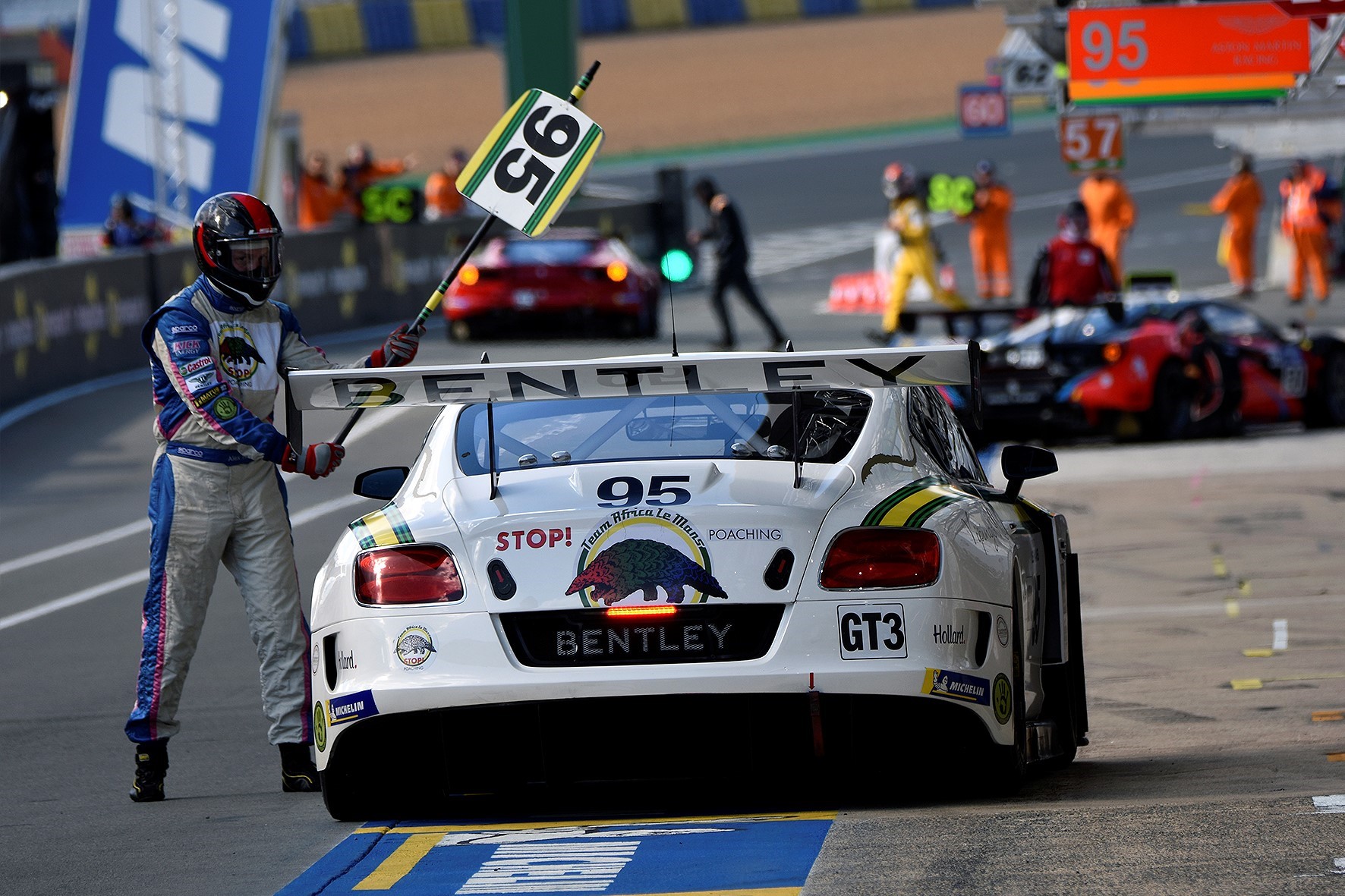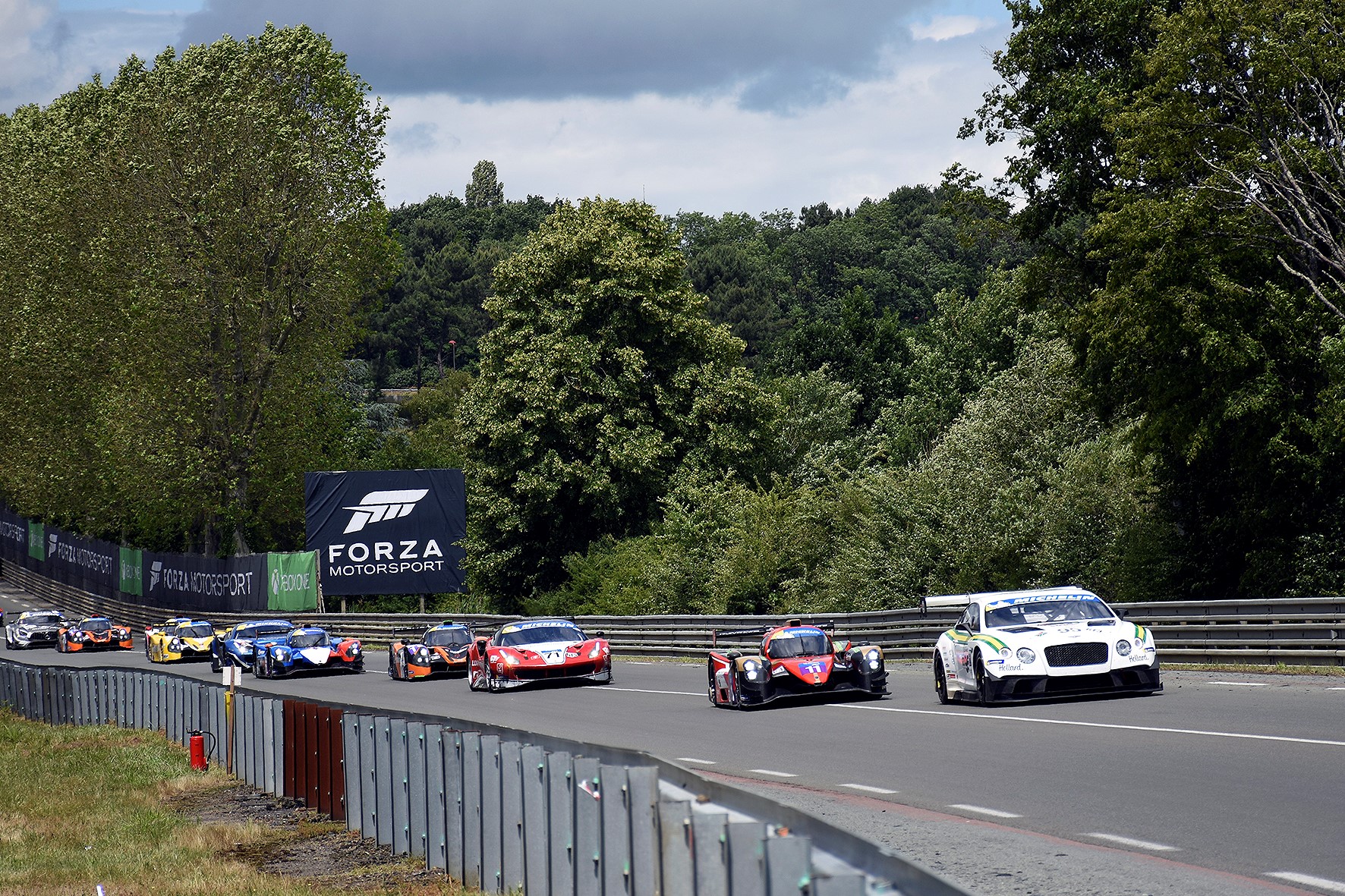OP-ED
From the Big Hole to the Big Race: Le Mans and the SA connection

A total of 252,500 spectators attended the 2019 24-Hours of Le Mans. Television coverage reached more than 800 million people. Some of the 61 cars in the main event operate on seasonal budgets of €100-million. But there is room, still, for a little nostalgia in such big-bucks, high-technology motorsport, particularly in an event with an unlikely South African connection.
“Never interrupt someone doing something you said couldn’t be done.” – Amelia Earhart
Nine thousand kilometres away from Le Mans, in South Africa’s Northern Cape province, in the city of Kimberley, is the Star of the West bar. Opened originally in a zinc shack as Diamond Lil’s Tavern, it catered for fortune seekers in the diamond rush of the early 1870s.
The treasure hunters had been attracted by the find of an 83-carat diamond, later to become famous as the Star of South Africa, which caused Sir Richard Southey, the colonial secretary at the Cape, to declare: “This is the rock on which the future success of South Africa will be built.”
After the pub was fitted out with a bar counter salvaged from the wreck of a ship, the Star of the West, which had foundered on the wild West Coast, the name was changed accordingly. Downstairs people drank in the hot and dry town; upstairs, Diamond Lil and her ladies fulfilled needs of another nature.

The veteran and the virgin. Jan Lammers, left, has done 24 Le Mans 24-Hour races. This was Greg Mills’ first drive at the legendary Circuit de la Sarthe. (Photo supplied)
Kimberley had mushroomed, with hundreds of thousands of fortune seekers quickly crowding into its sprawling shacks, tents, houses and compounds; diggers working 3,600 10m by 10m individual claims clustered in and around what became Kimberley’s Big Hole. A process of consolidation of the smaller concessions inevitably followed the increasing chaos of deeper mining, including cave-ins and flooding.
Two figures, Barney Barnato and Cecil John Rhodes, born a year apart, and frequent patrons of The Star, were central in this process and in so doing directly shaped the history of southern Africa and, in a far-flung arena, indirectly that of international motorsport.
Barney Barnato, born Barnet Isaacs in London’s East End in 1851, was a prizefighter and music-hall turn before he and his brother Harry joined his cousin David Harris in the Cape in 1873, four years into the diamond rush. Barney could not afford the coach fare to Kimberley, and it took him three months to walk there from Cape Town. Despite this slow start, within a decade, the Barnato Diamond Mining Company was competing with Rhodes over the amalgamation of the diggings.

The Team Africa Bentley GT3 highlighted the plight of the Pangolin to an 800 million global television audience. (Photo supplied)
The rivalry ended when Rhodes bought out Barnato for £5.4-million in March 1888, an amount equivalent now to more than £2-billion. Out of this emerged De Beers Consolidated Mines – and in the process diamond mining and marketing was transformed from an idealistic rush centring on the wild activities of frontiersmen (and a few women) to a stable industry supported by bankers, financiers and romantic consumers.
When asked whether he had a preference between gold and diamonds, Harry Oppenheimer, himself born in Kimberley and later, like his father Sir Ernest, elected as an MP for the city, replied: “Diamonds every time. I think people buy diamonds out of vanity and they buy gold because they’re too stupid to think of any other monetary system which will work – and I think vanity is probably a more attractive motive than stupidity.”

The Bentley hits nearly 300km/h down the 6km Mulsanne Straight. (Photo supplied)
To such reasoning not only the development of Kimberley, but South Africa’s industrial progress, an icon of British engineering and, in a footnote of history, the Le Mans 24-Hour race owes.
Barney Barnato died in 1897 in mysterious circumstances amid claims of suicide and blackmail and an alleged coup plot in the Transvaal Republic. Officially he was lost overboard near the island of Madeira while on a passage home to England. Most of his money went to his two-year-old son, Joel Woolf.
Educated at Charterhouse and Trinity College, Cambridge, Woolf, as he was known, served as an officer in the Royal Field Artillery in the First World War. He was an acknowledged sportsman, playing first-class cricket as a wicket-keeper for Surrey County Cricket Club from 1928-1930. But his driving abilities are often overlooked in favour of his great wealth and role as car manufacturer Bentley’s financial backer in the 1920s and early 1930s.
“The best driver we ever had,” said WO Bentley of the larger than life Woolf, a man who won three out of three attempts at Le Mans between 1928 and 1930.
Le Mans today comprises two races. The main event is the 24-Hour race, the 87th edition of which was held in 2019. The curtain-raiser, comprising two one-hour races, is known as the Road to Le Mans series, for slightly lesser performance cars, giving them a chance to gain a foothold into the series with the aim, one day, that they might challenge to gain an entry into one of the coveted 61 24-Hour garages.
In late April 2019, our small racing team, known optimistically as Team Africa Le Mans, was delighted (and surprised) to receive confirmation of a long-shot entry into the Road to Le Mans. We had tried before, but it was an almost impossible target given the challenges of finding, hiring, buying, or borrowing an eligible car and given that we were not entered into the full season of racing in Europe.
It was the chance of a lifetime.
Having managed to secure a car through Bentley motorsport in the UK, and a South African connection in the person of team director Brian Gush, we still had a mountain to climb in pulling the whole effort together. We lacked the logistical backing, equipment and funding of a professional team. But there were good building blocks.
We had a great team of volunteers, mostly from South Africa and Kenya. We had a superb professional co-driver in Jan Lammers, who famously won the 24-Hour race in 1988 for Jaguar and has probably raced more laps around the track than anyone still competing.
As the dust settles, and tyre tracks fade, there are three overwhelming memories of the week.
The first is the sheer volume and complexity of the logistics. In some respects, Le Mans was little different to most big races, save a little more difficult because we literally came with hand luggage only. Regardless, a checklist was drawn up and ticked off.
Car. Preparation. Spare wheels. Tyres. Air bottles. Air lance for jacking the car up. Wheel guns and sockets. Stickers. Spare suspension, lights, and electronic bits. Tools. Transport. Tickets. Timings. Team kit. Accommodation. Oils and other engine fluids. Fuel. Catering. Radio and repeater with a range far enough for the 13km circuit. Fireproof clothing for the pit crew. And so on and on.
But logistics and check-lists were complicated by new and confounding levels of bureaucracy. Satisfying all the requirements to enter the event is different from anything I have encountered in my 45 years of motorsport involvement. Because Le Mans is sanctioned by the international motorsport body the FIA, there is a mandatory driver grading system on application (and payment). International licences for drivers and entrants have to be applied and paid for. Two special transponders have to be purchased, and a data logger to monitor the engine’s performance rented, and both installed. Drivers have to undergo a drug awareness course and stringent medical exams and require a special carbon helmet. All clothing for pit crew and drivers alike has to meet the highest FIA standards.
The local Le Mans organiser, the ACO, or Automobile Club de l’Ouest, was a bit special. The accreditation system for the team was complex and confusing, the volume of correspondence and requirements almost overwhelming. On arrival at Le Mans the Sunday before the race weekend, I was greeted by a list of further requirements by the organisers, including finding a quad bike and trailer for our pit purposes, and a paddock tent which had to be erected along carefully measured and spraypainted lines on the road. Additional car stickers had to be made up to satisfy the organisers. Those were biggish hurdles for, at that stage, a one-man-show in a foreign town (until the rest of the team arrived late on the Tuesday), but were hopped over largely by a combination of Google Translate and good manners.
A bigger stumbling block was the scrutineering exam of the car, which was failed, the technical errors remedied only after a long night, resulting in successful resubmission the next day but only after several more items were added to an already formidable list. All of this had to be dealt with in pretty much incessant rain. There were many people with clipboards and ACO jackets always about, and not all of them friendly.
The second impression is that from the driver’s seat of a Le Mans virgin. Some car niggles meant we were not able to test at Silverstone the previous week. Once the car passed scrutineering, the first practice on Wednesday evening lasted just half a lap after a driveshaft problem. My fear of learning a magnificent but complex and highly demanding circuit with 38 corners over 13.6km in the rain was to be temporarily avoided until another rain-washed session early on Thursday. It was insufficient, to put it mildly.
We raced shortly afterwards on Thursday, Jan starting. While he had 3,500 laps behind him on the circuit I had just four. The striking feature of the track is not just its length, and the speed of the long Mulsanne straight where the twin-turbo Bentley was flat-out for long stretches, but its continuously undulating nature, making many of the corners completely blind, taking some commitment (and a few gulps) at 300km/h.
My goal was to stay out of trouble and keep up a steady pace. As a result, and entirely my fault, we finished closer to the tail than the tip of the 50-car field. I finished the week with just 14 laps under my belt, just enough to remind myself what corner was coming up next but not enough to nearly get them right.
The third impression centres on what we tried to achieve as a team. We wanted to use the platform to make motorsport more than simply a focus on cars, and technology, to issues bigger than the sport. Hence the branding of the car in the STOP! Poaching initiative.
Judging from the number of interviews conducted, not only did we raise a lot of interest as the first Africa team at Le Mans, but so did the anti-poaching campaign, and the pangolin image featured in highlighting the plight of the highly threatened mammal.
“What is a pangolin?” was the most asked question of us by crowds during the weekend. We were also honoured to play a small part in Bentley’s hundredth anniversary.
A young Swedish driver told me, “This is the ultimate, right? Everyone wants to drive at Le Mans, in our event or the 24-Hour. I am honoured just to be a part of it.”
Or as one of our all-volunteer team members, a retired general, put it: “Just getting there and finishing is a massive achievement. There is a reason that you and Jan are the 29th and 30th Bentley drivers ever at Le Mans – this stuff is seriously challenging!”
But the last word should be left to Jan Lammers, who has raced in 24 24-Hour events with the biggest of the big professional teams, and finished in every one of the top 10 positions:
“Thanks to your initiative and campaign we are able to spread the word of the poaching insanity and these precious vulnerable pangolins have gotten a touch of the attention they deserve. To qualify as your friend is the required skill for this team and I am sure that all of us are very proud of being part of this fantastic group. I’m ready for the next one when you are.”
I feel the same, of course, despite – or perhaps, because of – the challenges thrown our way. DM
Dr Greg Mills races for Team Africa when he is not heading up the Brenthurst Foundation. See www.teamafricalemans.com.


















 Become an Insider
Become an Insider